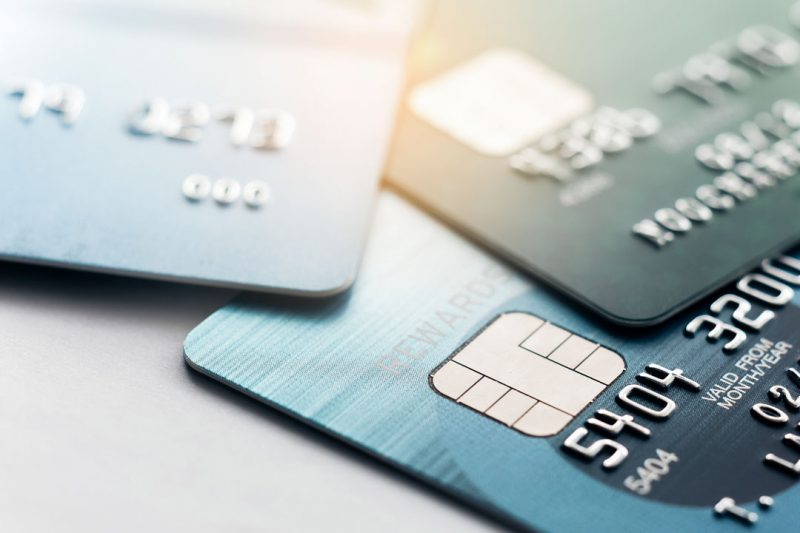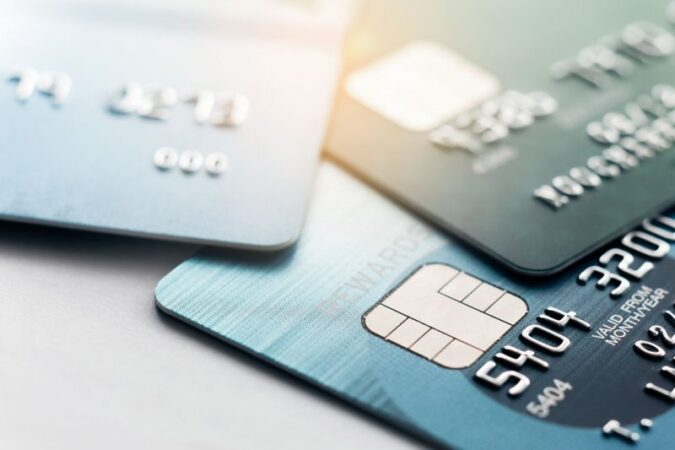
Transfer to 0 percent credit card – Transferring to a 0% APR credit card can be a smart move to save on interest charges and manage your debt effectively. This strategy allows you to pay down your balance without accruing interest for a specified period, potentially saving you hundreds or even thousands of dollars. But before you jump in, it’s essential to understand the intricacies of these cards and consider the potential downsides.
This guide will walk you through the process of transferring your balance to a 0% APR credit card, exploring the benefits, drawbacks, and key considerations. We’ll also discuss alternative options for managing your credit card debt and offer tips for responsible credit card use.
Understanding 0% APR Credit Cards
A 0% APR credit card is a type of credit card that offers a promotional period during which you won’t be charged interest on purchases. This can be a great way to save money on interest charges, especially if you’re planning to make a large purchase or if you’re carrying a balance on another credit card.
Duration of the 0% APR Period
The duration of the 0% APR period can vary depending on the card issuer and the type of purchase. Some cards offer 0% APR for a set period of time, such as 12 months or 18 months, while others offer 0% APR for a specific type of purchase, such as balance transfers.
Common Fees Associated with 0% APR Credit Cards
While 0% APR credit cards can be a great way to save money, it’s important to be aware of the potential fees that may be associated with them. Here are some common fees:
- Balance transfer fee: This fee is charged when you transfer a balance from another credit card to a 0% APR credit card. The fee is typically a percentage of the balance transferred, such as 3% or 5%.
- Annual fee: Some 0% APR credit cards have an annual fee. The fee is usually charged once a year, and it can vary depending on the card issuer.
- Late payment fee: This fee is charged if you make a late payment on your credit card bill. The fee can be as high as $39 or more.
- Cash advance fee: This fee is charged when you withdraw cash from your credit card. The fee is typically a percentage of the cash advance, plus a fixed fee.
Benefits of Transferring to a 0% APR Credit Card

Transferring your existing credit card balances to a 0% APR card can be a smart move, particularly if you’re carrying a significant amount of debt. This strategy allows you to save on interest charges and pay down your debt faster.
Saving on Interest Charges
A 0% APR credit card offers a temporary period during which you won’t accrue any interest on your balance. This can be a significant advantage, as interest charges can quickly add up, especially on high-interest credit cards.
For example, if you have a $5,000 balance on a credit card with a 20% APR, you could be paying over $1,000 in interest each year. By transferring that balance to a 0% APR card for 12 months, you could save that entire amount.
This allows you to focus your payments on paying down the principal balance, reducing your debt more quickly.
Managing Debt
A 0% APR card can be a valuable tool for managing your debt. It provides a period of grace, allowing you to consolidate your debt and create a more manageable repayment plan. This can be especially helpful if you have multiple credit cards with high balances.
- By transferring your balances to a single 0% APR card, you can simplify your debt management, making it easier to track your payments and stay on top of your finances.
- With a 0% APR card, you can focus on making consistent, higher payments, reducing your debt more quickly and saving on interest.
Considerations Before Transferring
Before you dive into transferring your balance to a 0% APR credit card, it’s crucial to carefully assess the terms and conditions of the new card to ensure it aligns with your financial goals and needs.
Balance Transfer Fees
Balance transfer fees are a common cost associated with transferring your existing credit card debt to a new card. These fees can vary significantly depending on the issuer and the amount of debt you transfer. Typically, balance transfer fees are a percentage of the transferred balance, ranging from 1% to 5%.
For example, if you transfer $10,000 to a card with a 3% balance transfer fee, you’ll be charged $300 upfront.
It’s essential to consider the balance transfer fee and factor it into your overall savings calculation. If the fee is too high, it might negate the benefits of the 0% APR period.
Interest Rates After the 0% Period
The 0% APR period on a balance transfer card is usually temporary, lasting for a set period, such as 12, 18, or 24 months. Once the promotional period ends, the card reverts to its standard APR, which can be significantly higher than the introductory rate.
It’s crucial to compare the standard APR of the 0% APR card to the APR of your existing card. If the standard APR on the new card is higher than your current card’s APR, transferring your balance might not be beneficial in the long run.
For example, if your current card has a 15% APR and the 0% APR card has a 20% standard APR, transferring your balance might seem appealing initially. However, after the 0% period ends, you’ll be paying a higher interest rate on your balance, potentially negating the initial savings.
It’s also important to note that some cards may have a penalty APR if you miss a payment or make a late payment. These penalty APRs can be very high, so it’s essential to make all your payments on time to avoid them.
Transferring Your Balance

Transferring your balance to a 0% APR credit card can be a smart move to save money on interest charges. The process is usually straightforward, but it’s important to understand the steps involved and any potential fees.
Steps Involved in Transferring Your Balance
The process of transferring your balance to a 0% APR credit card typically involves the following steps:
- Apply for a 0% APR credit card: You’ll need to apply for a new credit card that offers a 0% APR introductory period. Make sure to compare different offers and choose the one that best suits your needs. Pay close attention to the length of the 0% APR period and any associated fees.
- Get approved: Once you’ve applied, you’ll need to be approved for the card. The approval process typically involves a credit check and may take a few days.
- Provide your existing credit card information: After approval, you’ll need to provide the new card issuer with the details of your existing credit card, including the account number and balance. This information will be used to initiate the balance transfer.
- Complete the transfer: The credit card issuer will then transfer the balance from your existing card to the new card. This process may take a few days to complete.
Documents Required for the Transfer
You’ll need to provide the following documents when applying for a balance transfer:
- Proof of identity: This could include your driver’s license, passport, or other government-issued ID.
- Social Security number: The issuer will need this to verify your identity and credit history.
- Income information: You may need to provide information about your income, such as pay stubs or tax returns.
- Existing credit card information: This includes your account number and the balance you want to transfer.
Time Frame for Completing the Transfer
The time frame for completing a balance transfer can vary depending on the issuer. However, it typically takes a few days to a week for the transfer to be processed. It’s important to note that some issuers may charge a fee for balance transfers, so be sure to factor this into your calculations.
Managing Your 0% APR Credit Card
A 0% APR credit card can be a valuable tool for saving money on interest charges, but it’s crucial to manage it effectively to avoid falling into debt. The key to maximizing the benefits of a 0% APR card is to use it strategically and pay off the balance before the introductory period ends.
Budgeting and Paying Off the Balance
Budgeting is essential for managing any credit card, but it’s particularly important when you have a 0% APR card. Creating a realistic budget helps you track your spending and ensure you can afford to pay off the balance before the introductory period ends.
- Track your spending: Keep a record of all your expenses, including purchases made with your 0% APR credit card. This helps you identify areas where you can cut back and free up more cash for debt repayment.
- Create a repayment plan: Divide the total balance by the number of months remaining in the 0% APR period to determine your minimum monthly payment. Consider making larger payments to pay off the balance faster and avoid accruing interest.
- Set reminders: Set up reminders or calendar alerts to ensure you make your payments on time. Late payments can negate the benefits of a 0% APR card by triggering interest charges.
Avoiding Interest Charges, Transfer to 0 percent credit card
The main advantage of a 0% APR credit card is the ability to avoid interest charges during the introductory period. However, it’s crucial to understand how interest charges can apply and take steps to prevent them.
- Be mindful of the introductory period: The 0% APR period is usually limited, ranging from 6 to 18 months. Keep track of the end date and make sure you pay off the balance before it expires.
- Avoid balance transfers after the introductory period: Once the 0% APR period ends, transferring a balance to another 0% APR card might seem like a solution, but it can lead to a cycle of debt if you don’t manage it carefully. Focus on paying off the balance rather than transferring it.
- Avoid new purchases after the introductory period: Once the introductory period ends, the standard APR applies to all new purchases. To avoid accruing interest on new purchases, consider using a different credit card or paying in cash.
Responsible Credit Card Use
Using a 0% APR credit card responsibly involves more than just paying off the balance on time. It also includes making informed decisions about your spending habits and overall credit health.
- Use the card for necessary expenses: Avoid using your 0% APR credit card for frivolous purchases. Focus on using it for essential items or expenses that can help you save money, such as travel or medical bills.
- Don’t max out your credit limit: Using a significant portion of your credit limit can negatively impact your credit score. Aim to keep your credit utilization ratio (the amount of credit you use compared to your total credit limit) below 30%.
- Monitor your credit score: Regularly check your credit score to ensure your 0% APR card is not negatively impacting your credit health. You can access your credit score for free through various online services.
Alternatives to 0% APR Cards: Transfer To 0 Percent Credit Card

While 0% APR credit cards can be a valuable tool for managing debt, they are not the only solution. There are other options available, each with its own advantages and disadvantages. Exploring these alternatives can help you find the best strategy for your financial situation.
Debt Consolidation Loans
Debt consolidation loans combine multiple debts into a single loan with a lower interest rate. This can simplify your payments and potentially save you money on interest.
- Lower Interest Rates: Consolidation loans often offer lower interest rates than credit cards, especially if you have good credit. This can lead to significant savings on interest payments over time.
- Simplified Payments: Instead of juggling multiple payments, you’ll only have one monthly payment, making it easier to manage your debt.
- Potential for Shorter Repayment Term: With a lower interest rate, you might be able to pay off your debt faster, reducing the overall cost of borrowing.
However, debt consolidation loans can also have drawbacks:
- Higher Initial Fees: Some lenders charge origination fees, which can increase the overall cost of the loan.
- Potential for Longer Repayment Term: If you don’t choose a loan with a shorter repayment term, you could end up paying more interest in the long run.
- Risk of Re-Borrowing: If you don’t address the underlying spending habits that led to debt, you might end up re-borrowing after consolidating your debts.
Balance Transfer Services
Balance transfer services allow you to transfer the balance of your existing credit cards to a new card with a lower interest rate or 0% APR introductory period.
- Lower Interest Rates: Balance transfers can help you save money on interest payments, especially if you have a high-interest credit card.
- 0% APR Introductory Periods: Some balance transfer cards offer 0% APR for a certain period, allowing you to pay down your balance without accruing interest.
- Potential for Faster Debt Repayment: With lower interest rates or 0% APR, you can pay down your debt faster, reducing the overall cost of borrowing.
However, balance transfer services can also have drawbacks:
- Balance Transfer Fees: Many balance transfer cards charge a fee, typically a percentage of the transferred balance.
- Limited Timeframe: The 0% APR introductory period is usually temporary, after which the interest rate will increase to a standard rate.
- Credit Score Impact: Applying for a new credit card can impact your credit score, especially if you have multiple inquiries in a short period.
Last Recap
By carefully evaluating your options and understanding the terms and conditions of 0% APR cards, you can make an informed decision that aligns with your financial goals. Remember to prioritize responsible credit card use and develop a plan to pay off your balance before the introductory period ends. Taking these steps can help you avoid interest charges and build a healthier financial future.
FAQ Section
What are the common fees associated with 0% APR credit cards?
Common fees include balance transfer fees, annual fees, and late payment fees. Make sure to check the terms and conditions for specific fee details.
What happens after the 0% APR period ends?
Once the introductory period expires, the standard APR (annual percentage rate) kicks in. It’s crucial to understand the new interest rate and have a plan to pay off your balance before it becomes too burdensome.
How long does it take to transfer a balance to a 0% APR card?
The transfer process usually takes a few business days, but it can vary depending on the issuer and the amount being transferred.
What if I can’t pay off my balance before the 0% period ends?
If you can’t pay off your balance in full, consider contacting the issuer to discuss your options. They may offer a hardship program or allow you to extend the 0% period. However, this is not guaranteed and may come with additional fees.





